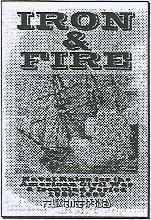

| David Sullivan (daves7@uswest.net) |
|---|
| I just played my first game. I gotta say I like 'em.
We played a scenario set in Charleston using the CSS Palmetto State, CSS Charleston, and two torpedo boats. These went up against the USS Nahant (monitor), USS New Ironsides, USS Paul Jones, USS Massasoit, and USS Kansas. All ships were 1/600th scale Thoroughbred. We used the regular scale of the rules which worked fine even with the larger models. The object of the game was for the Confederates was to sink the New Ironsides and get away with both ironclads. The Union wins by preventing this. Due to user error, I was applying damage to the ironclads from non-penetrating shot which racked some serious PV loss to both Confederate ironclads. Rather than backing up after I found we we doing it wrong we just went on. This would later work to my discomfiture. Both torpedo boats went ka-boom on turn one. Little bitty things (5 PV), they were done in very quickly by some 11" shot. The Union wooden boats took some nasty damage in the first part of the game and courageously skedaddled to avoid more. The two Rebel ironclads and the two Union ironclads danced around each other trading mostly ineffectual shots (well, my shots were ineffectual; the Nahamt was making life unbearable for the poor Palmetto State). The Charleston made two unsuccessful ramming attempts on the New Ironsides. The Palmetto State finally did it. The ram results + spar torpedo caused 20 pts. flooding damage per turn. Fortunately the New Ironsides has about 165 PV to start with and had ample time to stop flooding. However, before that happened the Palmetto State, bravely absorbing a lot of XV" shot from the Nahant, finally took a waterline hit that did 8 pts. flooding damage, which by an intersting coincidence was exactly how many PV it had left. Ergo, Palmetto State sleeps with the fishes and the Union wins. Bastards. Our impressions of the game were most favourable. The mechanisms are simple, but give a very good feel for the period. Armored ships are tough to kill with ACW-era weapons. The two Confederate ironclads had armor values (AV) of 6 and 7. The XI" Dahlgren has a "6" penetration at point blank. That's enough to do some damage. The XV" Dahlgren can penetrate "7" at point blank. The Confederate armament was incapable of penetrating the armor on either of the Union ships (but made hash out of the wooden boats). It didn't take much time to get the hang of the game. We had four players, three of whom had never seen the rules beforehand. By turn 3 we were going smoothly. Gunnery is simple and straightforward. The New Ironsides - with all those broadside guns - didn't hold up the game ad infintum. We used the statistical tables to easily determine number of hits, form there it was just a matter of determing effect (usually none). It works the way it should, too. Once a ship gets in close and its gins can penetrate it can do very bad things. If there is no penetration the target is off scot free unless a critical hit occurs, although most of them need penetration for effect. (Watch out for critical hit #4, the "foist with your own petard" crit. It wrecks your own gun and caused 10 PV damage. Ouch.) We used alternative movement. This worked surprisingly well. It saves a great deal of time (no order writing) and is no less "real" than writing orders and moving simultaneously, which always seemed like a lot of begosh and begorrah to me and created too many collisions (a.k.a., unintentional rams on your own ships). The ramming rules were good, too. Successfully ramming a manouverable target is hard, target and rammer roll a D10 each and the ram is only successful if the numbers match. This accords well with reality. Out of four attempts in our game, one was successful. Three others never happened because the damn Yankees got the initiative and scooted away. Things I particularly liked:
Things I disliked:Nothing, really. Things to change:(Mostly just thoughts while strolling, i.e., no serious deliberation...)
On the whole, I think Iron & Fire plays very nicely and is definitely one of the better sets available. I'm looking forward to more games of this. IMHO, it beats the heck out of Smoke on the Water and is far more accessible for newbies than Ironclads in all those convention games I wind up running. |
If you would like to add your opinion to this webpage, use the following form or send email to the editor.
| Last Updates | |
|---|---|
| 6 October 1999 | comments by David Sullivan |
| 27 August 1999 | No longer in print |
| 27 February 1999 | designer's website |
| 15 August 1998 | new email for David |
| 23 July 1998 | added cover illustration |
| Comments or corrections? | |